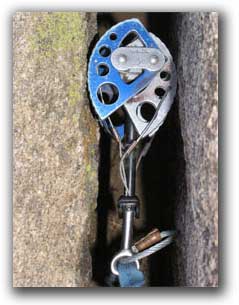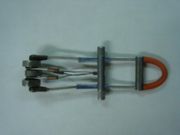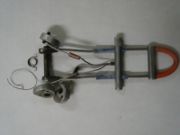Active climbing cam
From DDL Wiki
| Line 58: | Line 58: | ||
- "walking" in cracks (when device gets stuck in a rock and you cannot remove it)<br /> | - "walking" in cracks (when device gets stuck in a rock and you cannot remove it)<br /> | ||
- with many devices the extra weight is evident<br /> | - with many devices the extra weight is evident<br /> | ||
| + | |||
| + | |||
| + | {| class="wikitable" border="1" | ||
| + | |- | ||
| + | ! Cam before dissection !! Cam after dissection | ||
| + | |- | ||
| + | ! [[Image:Original_Cam.JPG|thumb|Description]] | ||
| + | | | ||
| + | [[Image:Dissected_Cam.JPG|thumb|Description]]|| | ||
Revision as of 23:44, 30 January 2007
Pre-Dissasembly Phase
INPUTS:
- retraction force from hand
- friction force from rock
- reaction force from rock
OUTPUTS:
- force on climbing rope
- force on rock
Function: Spring Loaded Camming Devices
- protect against falls in free or aid climbing
- build removable anchors in rock
- secure a belayer
- mountaineering uses
- mountain rescue
- passive climbing protection
Method of Use
- locate crack
- Identify appropriate size cam unit
- remove cam from harness/chest sling
- grip cam securely
- retract the trigger
- insert in crack, pocket or flake
- find secure placement
- orient the cam with expected direction of force
- retract trigger and remove
- removed either on rappel or by 2nd climber
- replace back on harness or chest sling
Stakeholders
- climber
- rescue workers (mountain rescue)
- insurance companies (health, life & company insurance)
- tourism
- manufacturers
- hospitals
- environment
- retail services
- distributors
Issues associated with use
- having proper size for each type of placement
- dropping the device while climbing
- "walking" in cracks (when device gets stuck in a rock and you cannot remove it)
- with many devices the extra weight is evident
| Cam before dissection | Cam after dissection |
|---|---|
| || |



